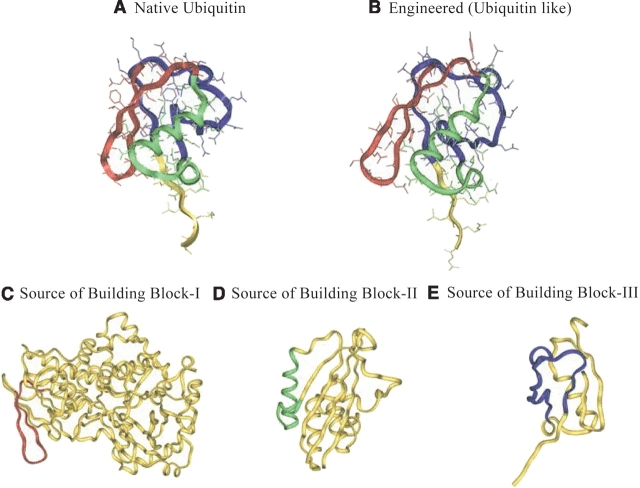Figure 4.
The structure and three building blocks of the native ubiquitin and the engineered ubiquitin. The sources used for engineering eng-1ubq are also shown. BB-I is shown in red, BB-II is shown in green, and BB-III is highlighted in blue. The unassigned and unused fragments are shown in yellow. (A) The native ubiquitin: Building block-I (BB-I, residues 1–20) consists of a β-hairpin. Building block-II (BB-II, residues 21–41) is an α-helix rich fragment. Building block-III (BB-III, residues 42–68) is a loop. (B) The structure and building blocks of eng-1ubq. Similar to the BB-I in nat-1ubq, BB-I of eng-1ubq is a β-hairpin. BB-II is an α-helix rich fragment. BB-III is a loop. (C) The structure of Escherichia coli topoisomerase I, the source protein of BB-I of eng-1ubq. The residues used as BB-I of eng-1ubq are shown in red. (D) The structure of urinate isomerase, the source protein of BB-II of eng-1ubq. The residues used for BB-II of eng-2gb1 are shown in green. (E) The structure of Sumo-I, the source protein of BB-III of eng-1ubq. The residues used as BB-III of eng-1ubq are shown in blue.

